A Taste of Interior Alaska History at Pioneer Park in Fairbanks
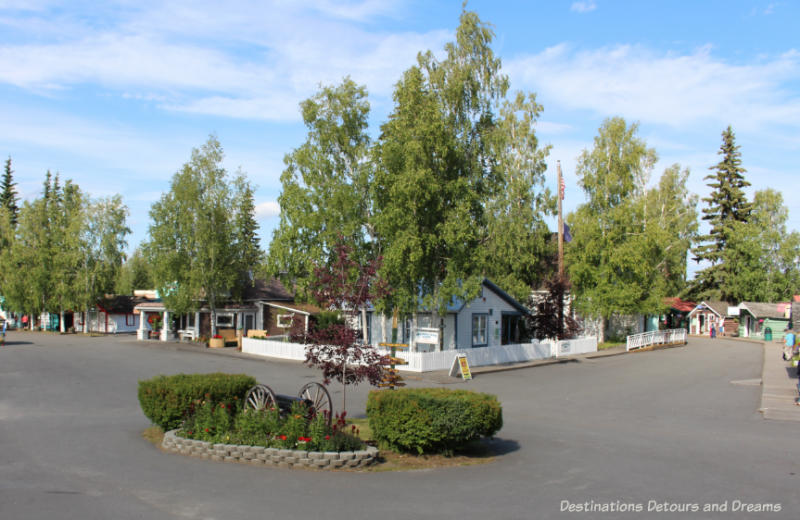
A recreated Gold Rush Town, an outdoor Alaskan feast, and a musical comedy revue about history and northern life in Pioneer Park, Fairbanks, Alaska
(Disclosure: Thanks to Explore Fairbanks for hosting my visit. Opinions and observations, as always, are my own.)
The museums and old buildings in Pioneer Park in Fairbanks, Alaska provide an interesting glimpse into Fairbanks’ past amid modern-day amenities.
Pioneer Park opened in 1967 as the Alaska Centennial Exposition celebrating the 100-year anniversary of the U.S. purchase of Alaska from Russia. It is home to many of Fairbanks’ early cabins and buildings, moved from their original locations to the park.
Gold Rush Town
The relocated buildings have been placed on a series of pedestrian streets to create a Gold Rush Town. Fairbanks got its start in 1902 when gold was discovered in the area. Signs on the outside walls of the buildings identify where they came from and when they were originally built.
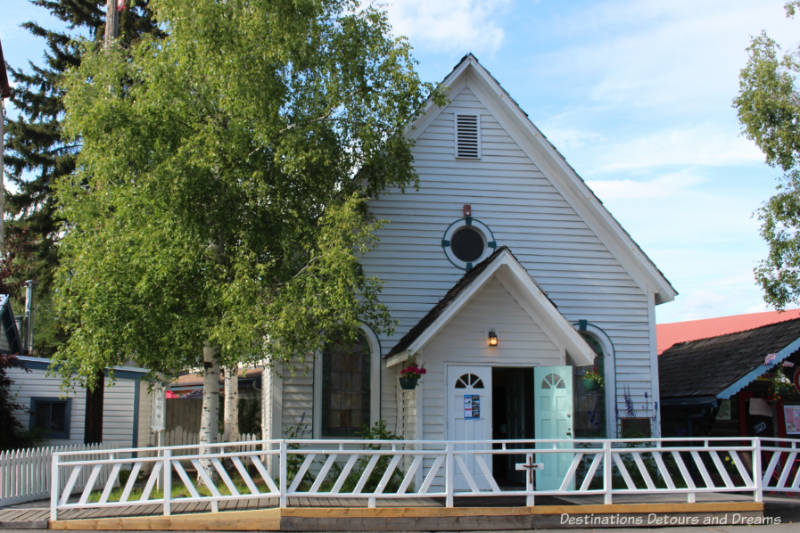
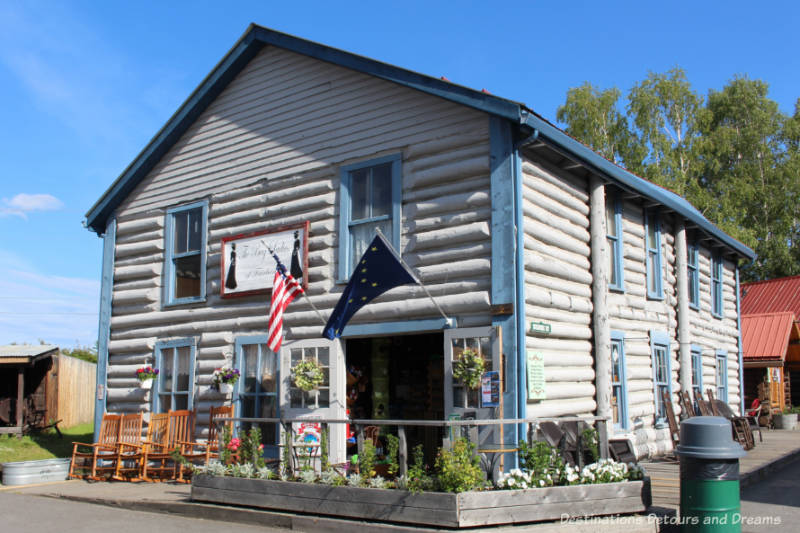
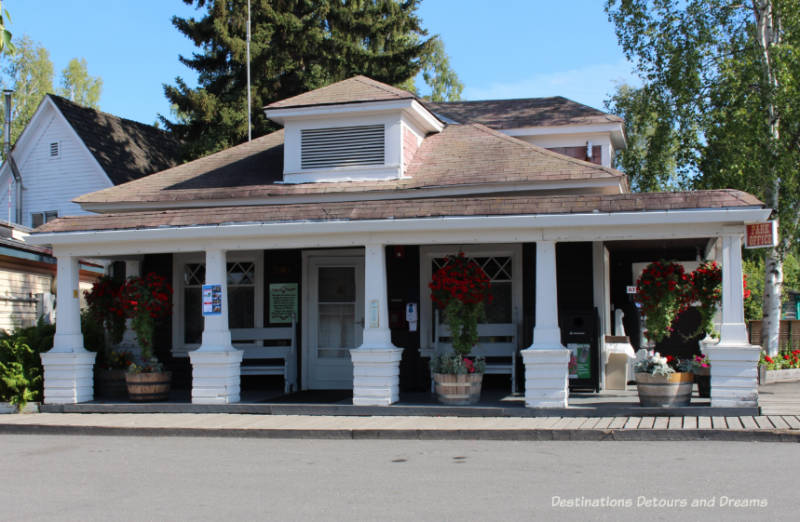
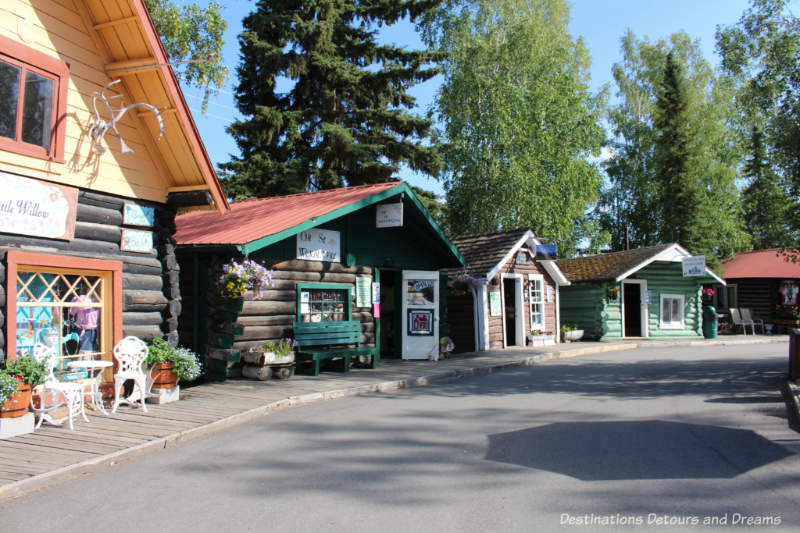
The majority of the buildings in Gold Rush Town are log cabins, which I came to associate with Fairbanks because of the number I saw there. Although the log cabins in Pioneer Park are from the past, log cabins are not just relegated to history in Alaska. I came across many newer-build log cabins as well.
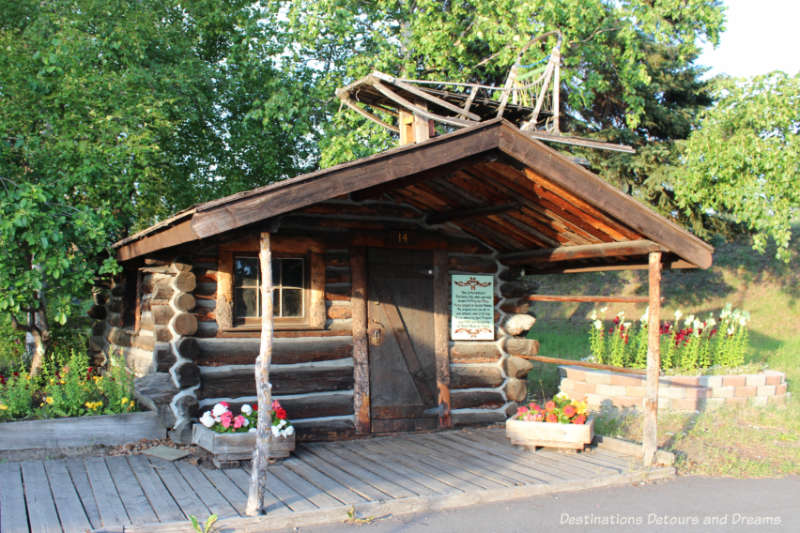
Note the dogsled on the roof.
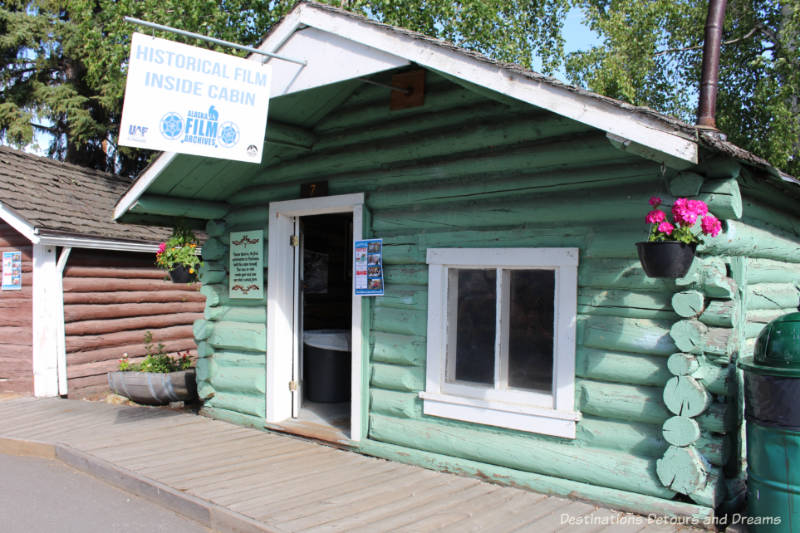
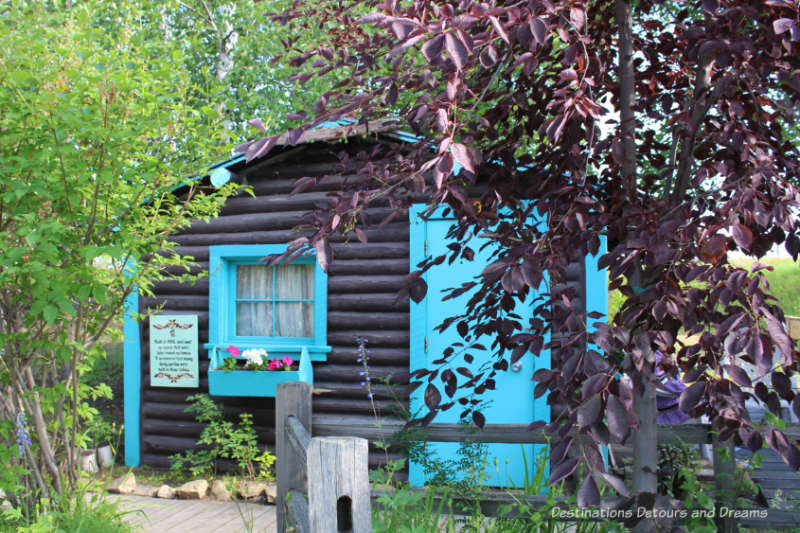
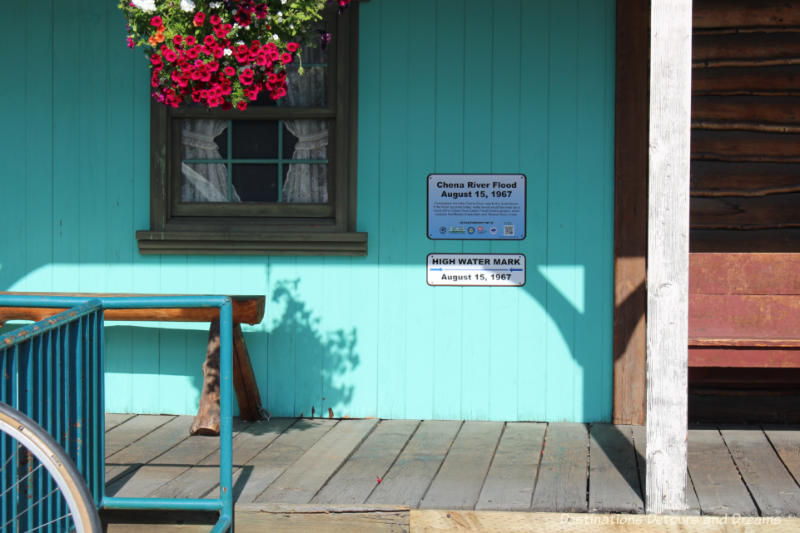
Fairbanks experienced an historic flood in 1967 when the Chena River spilled over and the city became a lake for more than a week. Signage on one of the buildings indicates how high the floodwaters were. The Chena River Lake Flood Control Project was subsequently constructed to protect Fairbanks from future floods.
Inside many of the historic buildings, you’ll find food concessions and modern-day gift and specialty stores.
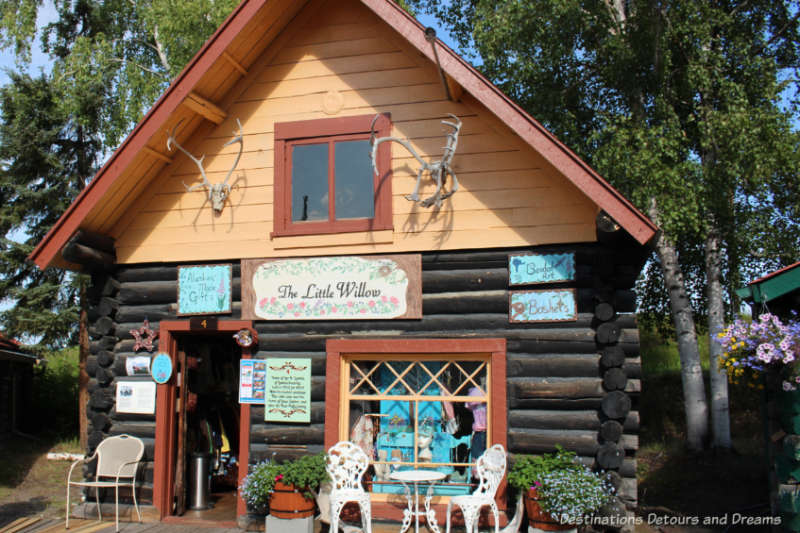
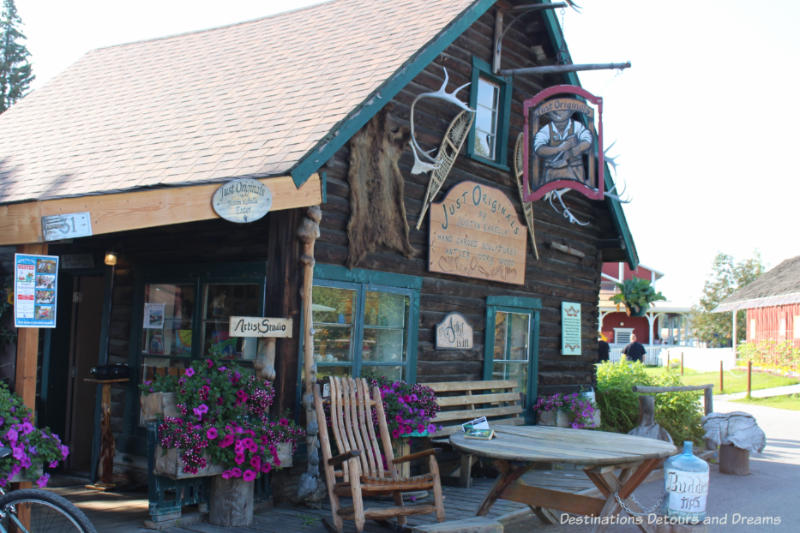
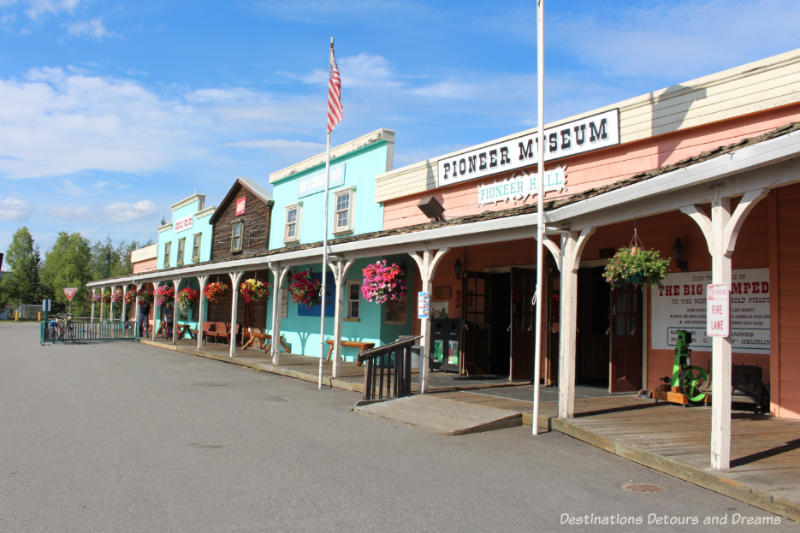
Other buildings contain museums, such as the Pioneer Museum, filled with artifacts of early Fairbanks.
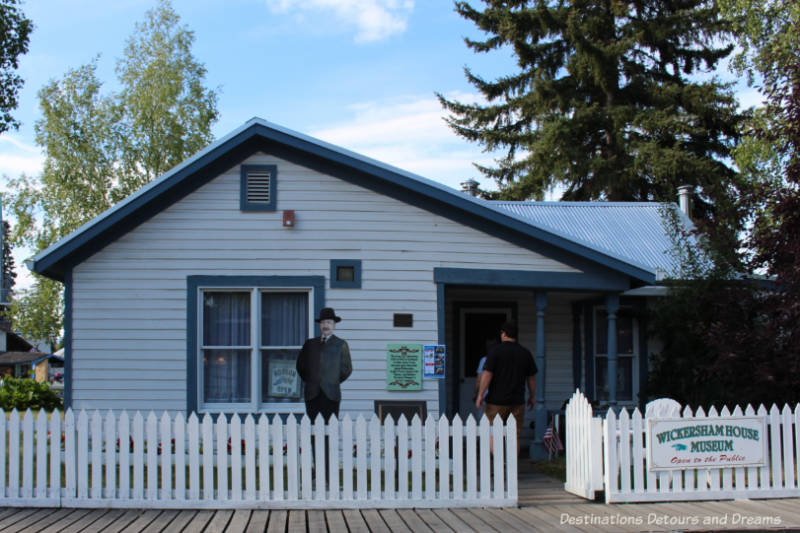

The Kitty Hensley House was originally located on Eighth Avenue. In 1914, Kitty Hensley’s friend Captain Smythe, a retired riverboat captain, remodeled the 1900s cabin with lumber from one of his sternwheelers that had been badly damaged during spring break-up. It is now a free-admission museum furnished with authentic period furniture.
Other museums located in Gold Rush Town are the Riverboat Nenana and the Tanana Valley Railroad Museum.
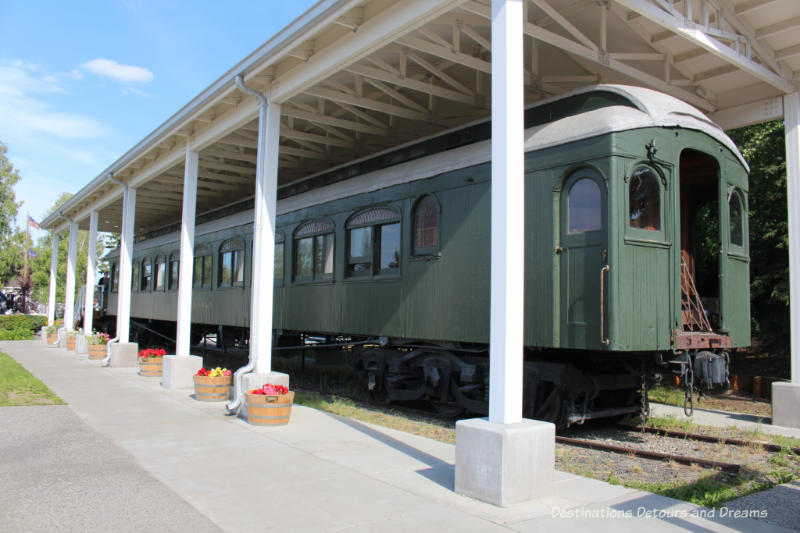
At the edge of Gold Rush Town, you’ll find the Harding Car, built in 1905 in Chicago, Illinois. It carried passengers until 1945. It is the train car President Warren G. Harding rode in when he came to Alaska in 1923 to drive the Golden Spike for the Alaska Railroad. The Golden Spike signified the completion of the 500-mile-long line.
Salmon Bake
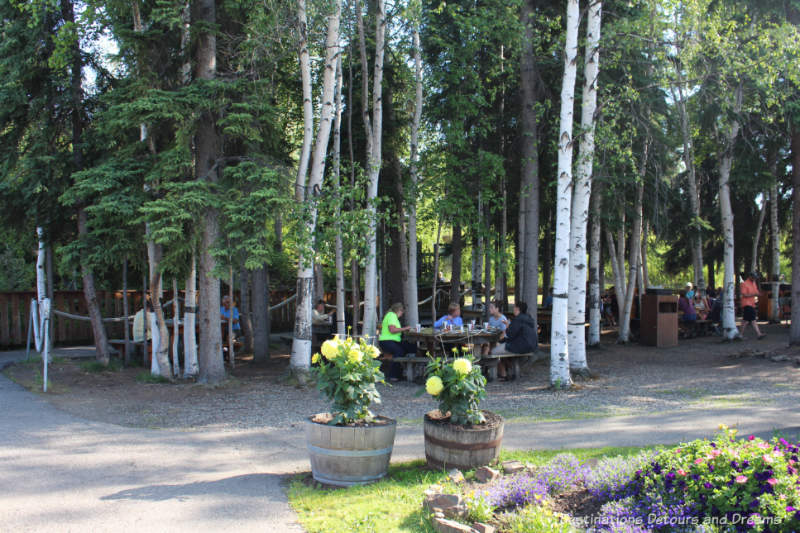
At the other end of the park, picnic tables under the shade of birch trees provide a lovely setting for the popular Salmon Bake dinner. All-you-care-to-eat wood grilled salmon, beer battered halibut, fried chicken, and slow roasted prime rib, accompanied by roasted potatoes, baked beans, sourdough rolls and a salad bar, are served buffet-style.
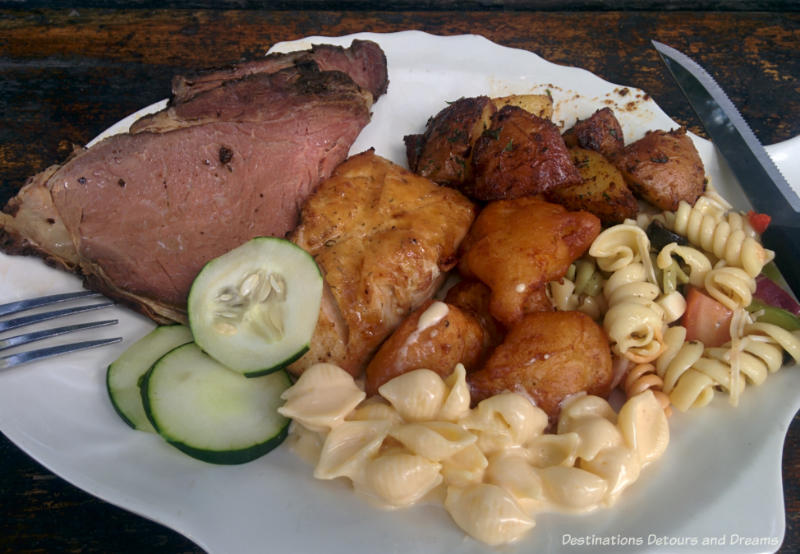
Golden Heart Revue
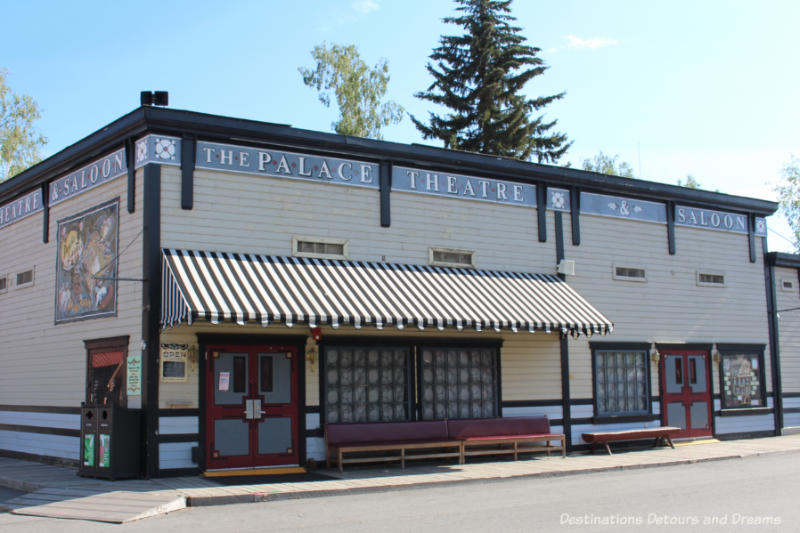
During summer months, the Palace Theatre in Gold Rush Town stages an evening performance, the Golden Heart Revue. The show is named after the city’s motto, the “Golden Heart City”. The name comes from the city’s gold mining history, its location in the heart of Alaska, and its hospitality. The Golden Heart Revue is a musical comedy covering highlights of Fairbanks history and providing a humorous look at life in the north. A little on the corny side, the show is a lot of fun. Old sing-along tunes, comic misfortunes of early Fairbanks history, a drag dancing girl from the seamier side of Fairbanks, a present-day fashion show in which the model wears so many layers in winter she can barely move, and Fairbanks’ winter theme song (“Honolulu” sung to the the tune of the “Hallelujah Chorus”). It will make you laugh and you’ll leave with a smile on your face.
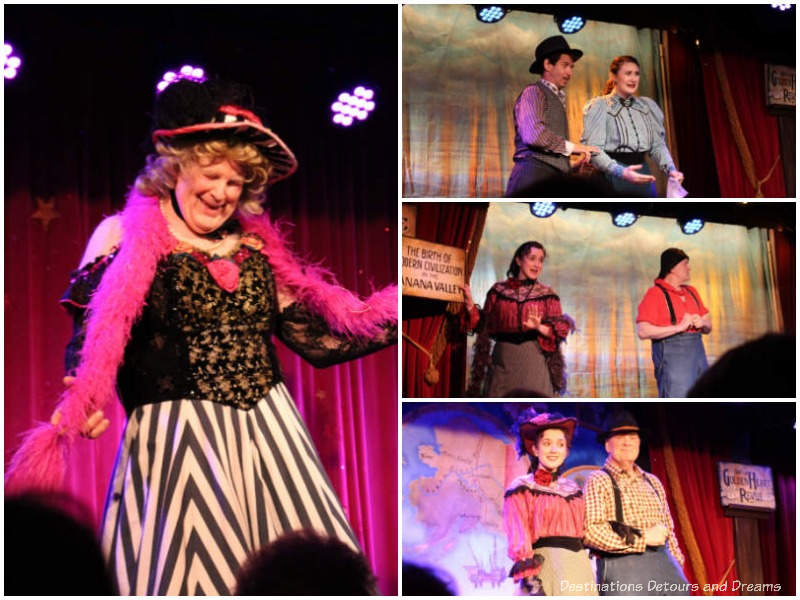
Visiting Pioneer Park
Other attractions in Pioneer Park include children’s playgrounds, the Bear Gallery (art gallery), the Pioneer Air Museum, miniature golf, volleyball, bocce ball, horseshoe and kayak and canoe rentals.
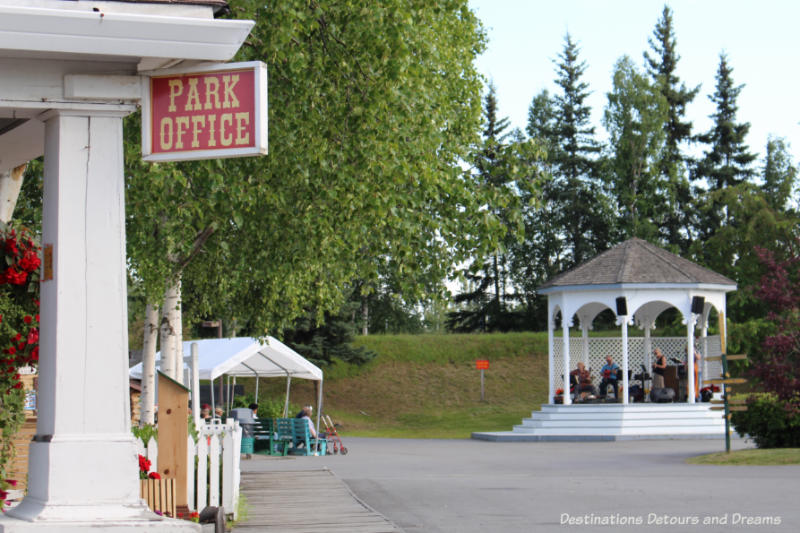
Pioneer Park is open seven days a week year-round. Admission to the park is free, but many of the museums and activities charge admission. The concessions, shops and museums in Pioneer Park are open from Memorial Day weekend through Labor Day weekend. The Salmon Bake and Golden Heart Revue take place nightly from mid-May to mid-September.
I enjoyed walking through Pioneer Park. I did not have the time to visit all the museums, but would certainly do so on a future visit. I recommend both the Salmon Bake and the Golden Heart Revue for anyone visiting Fairbanks.
Never miss a story. Sign up for Destinations Detours and Dreams free monthly e-newsletter and receive behind-the-scenes information and sneak peaks ahead.
PIN IT
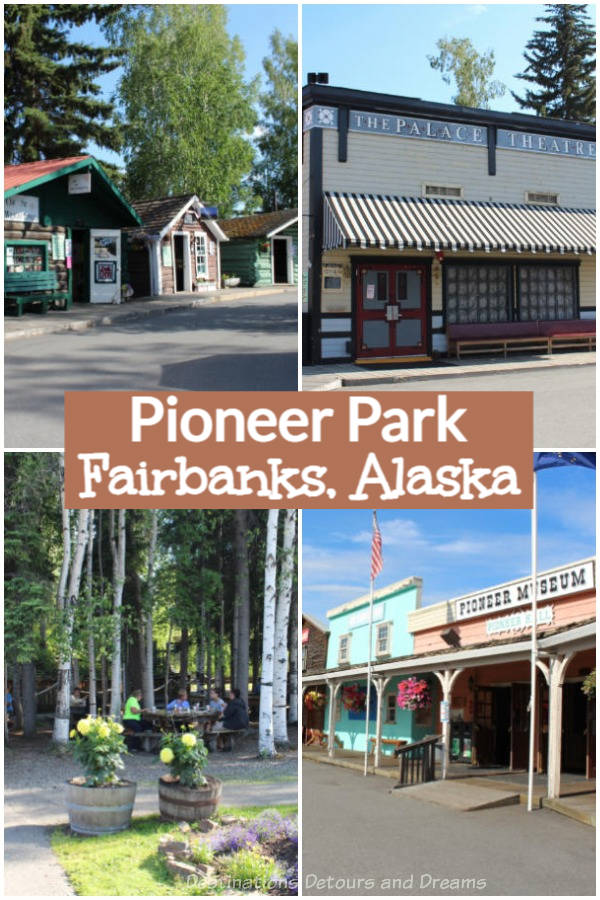

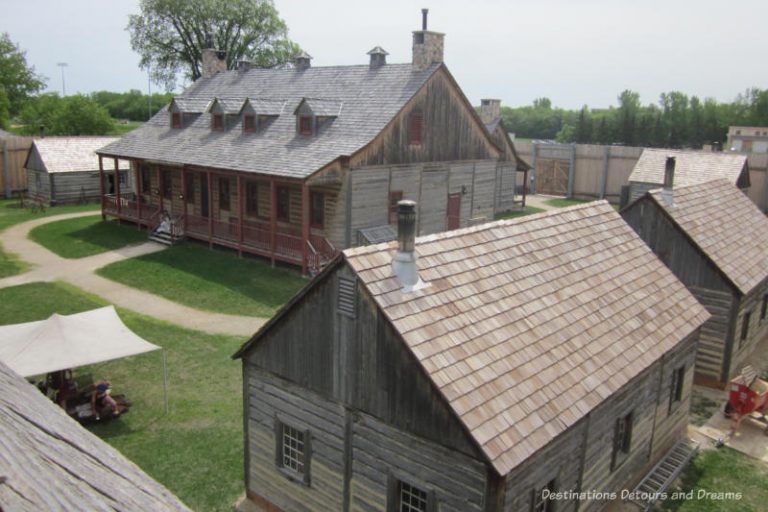
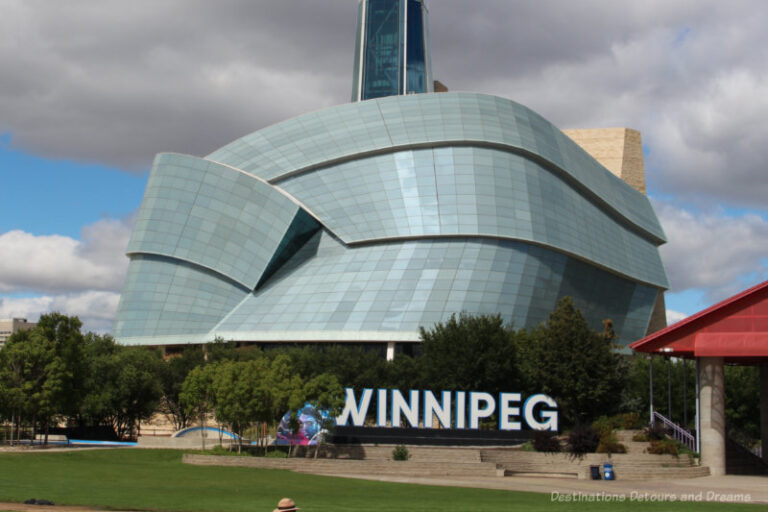

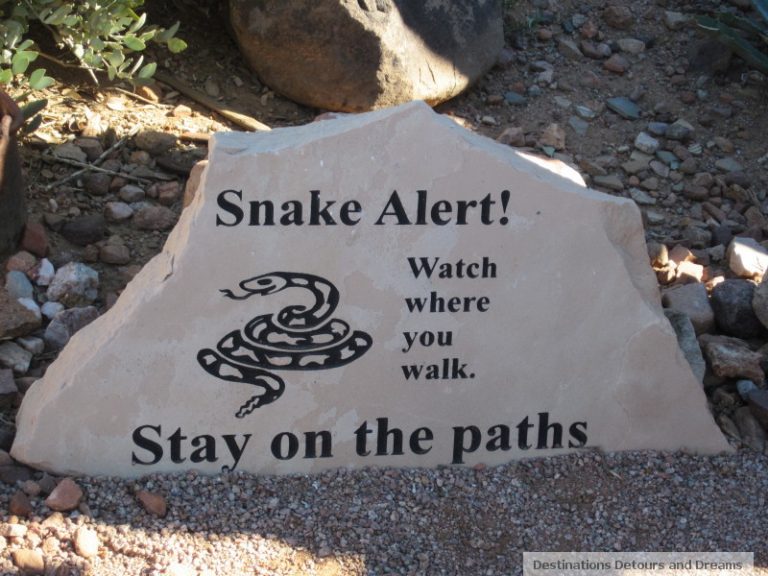
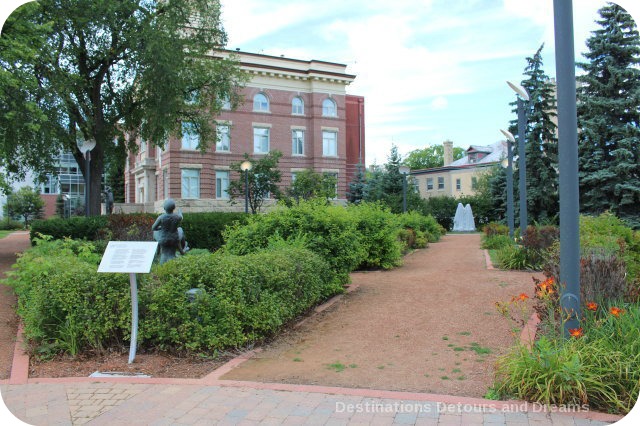
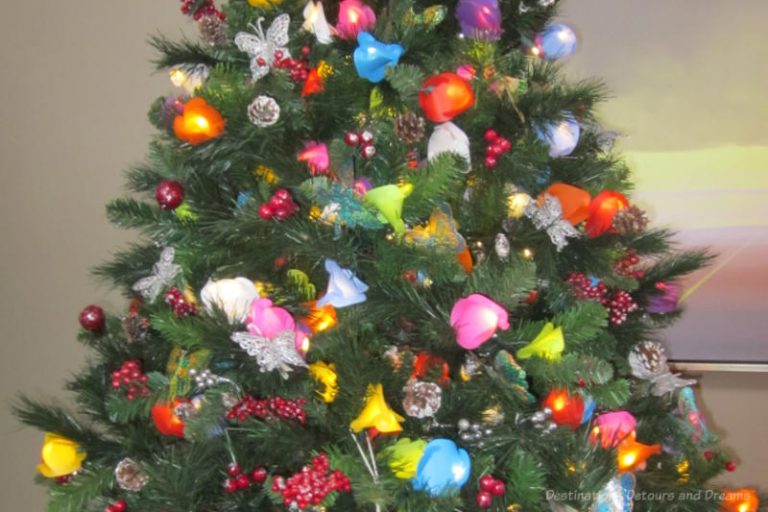
Really interested in the replica gold rush town. The buildings look pretty authentic although I think of a Gold Rush town as being a little more beat up.
Ken, I think it looks authentic because the buildings are all original – they’ve just been moved from their original locations. They are also well looked after – I do think of a Gold Rush town as little more beat up – or maybe just muddier from mud streets, etc.
I remember the place so well, I was 16 and working there, every day they shot old soapy smith right in front of me. I really liked the salon girls and the girls that worked at the Northwest trade store. My grandmothers friend played the rinky-tink piano on the river boat. I think she was named Ida Lane. One of those log cabins had a trapper their I think it was Kingery brothers furriers.
John, it must have been a fun place to work as a teenager. It sounds as if you have good memories.